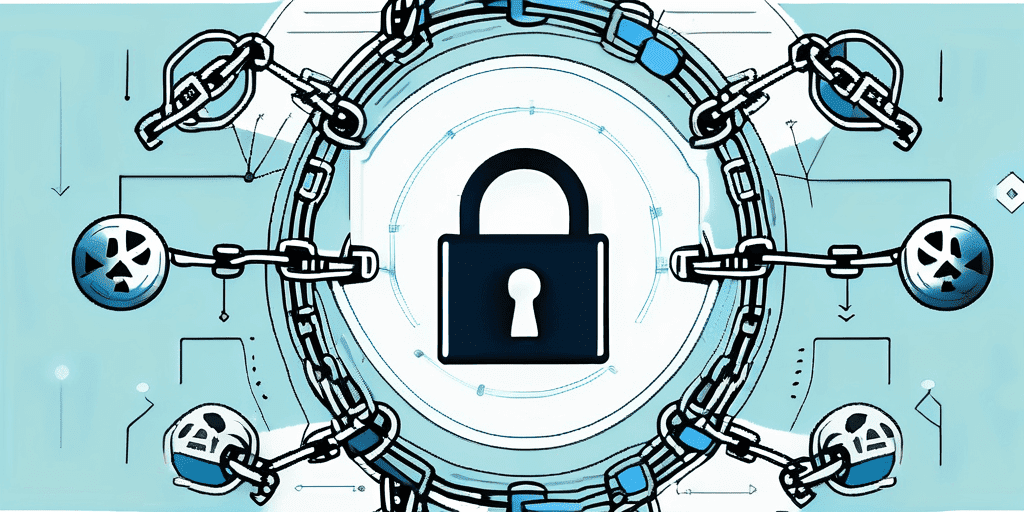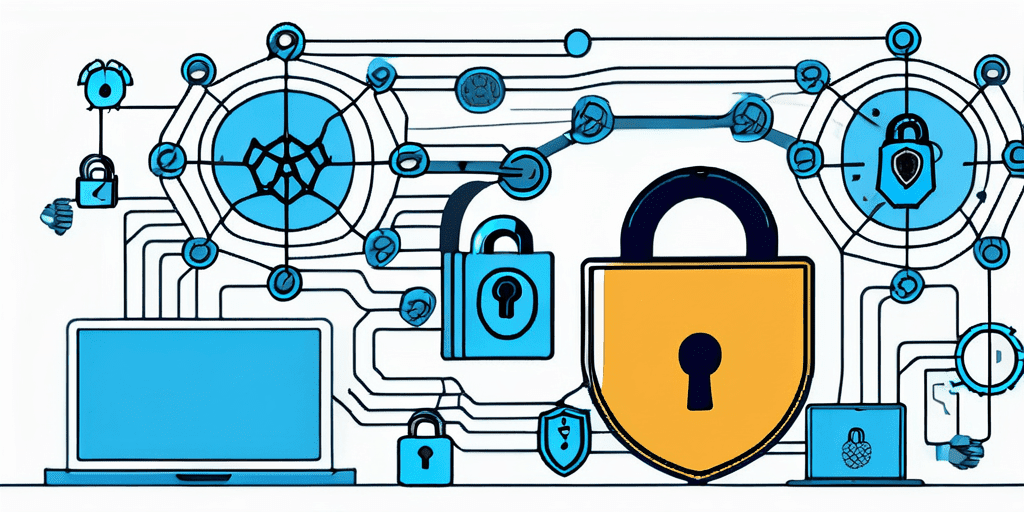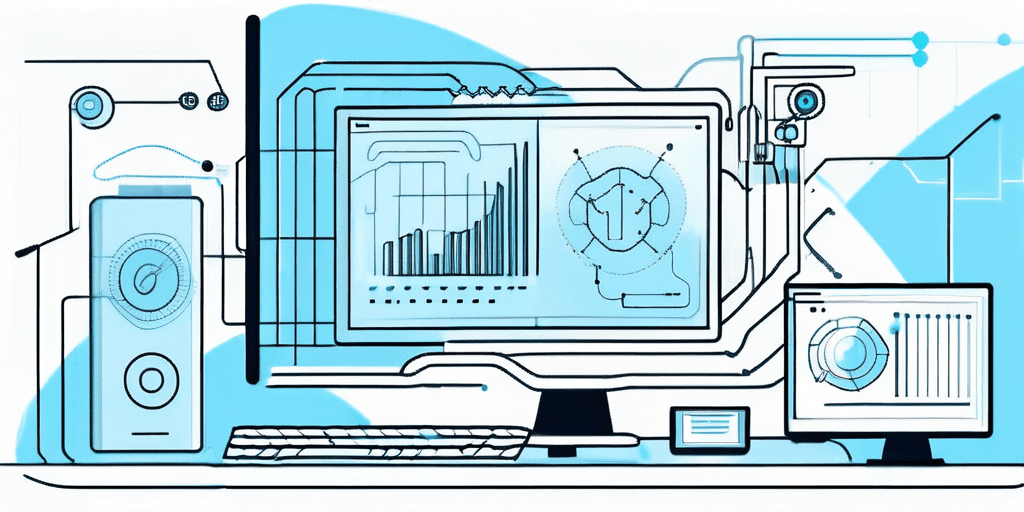In today’s interconnected world, where technology permeates every aspect of our lives, the security of digital interfaces has become a critical concern. Constrained interfaces are a specific type of interface that poses unique challenges and risks in terms of cybersecurity. Understanding the intricacies of these interfaces and their impact on cybersecurity is essential for protecting our digital systems and ensuring the privacy and security of user data. This article explores the concept of constrained interfaces, their relationship with cybersecurity, and strategies to mitigate potential threats.
Understanding Constrained Interfaces
Constrained interfaces refer to user interfaces that have limitations in terms of functionality, design, or size. These interfaces are often found in devices with limited processing power, memory, or display capabilities, such as smartwatches, Internet of Things (IoT) devices, and embedded systems. Despite their limitations, constrained interfaces play a pivotal role in technology, enabling interactions between users and devices in various domains, including healthcare, transportation, and home automation.

It is important to recognize the significance of constrained interfaces and the impact they have on the overall user experience. Whether it’s a smart thermostat that allows users to control their home’s temperature remotely or a fitness tracker that monitors vital signs and tracks physical activity, constrained interfaces have become ubiquitous in our daily lives.
Definition and Importance of Constrained Interfaces
To understand the importance of constrained interfaces, let’s start by defining them. Constrained interfaces are user interfaces that are constrained by limitations in areas such as processing power, memory, screen size, or input methods.
Constrained interfaces are crucial as they enable interaction with devices and systems that have limited resources. Without these interfaces, users would not be able to access and control the functionality offered by these devices effectively. For example, a smartwatch with limited screen size and processing power relies on a constrained interface to provide users with a seamless experience for receiving notifications, tracking fitness activities, and managing other apps on the device.
The Role of Constrained Interfaces in Technology
The role of constrained interfaces extends beyond mere functionality. By enabling seamless interaction between users and devices, they enhance user engagement and convenience. The proliferation of IoT devices and wearable technology exemplifies the growing dependency on constrained interfaces.
Companies like Fitbit, known for their fitness trackers, have leveraged constrained interfaces to create products that are easy to use and provide valuable health insights to users. These devices utilize constrained interfaces to collect and present data, making it accessible and meaningful to users, ultimately promoting a healthier lifestyle.
Moreover, constrained interfaces have also found their way into the healthcare industry. Medical devices, such as glucose monitors and insulin pumps, rely on constrained interfaces to allow patients to monitor their health conditions and administer necessary treatments. These interfaces are designed to be intuitive and user-friendly, ensuring that patients can easily navigate through the device’s functionalities and make informed decisions about their health.
Additionally, the automotive industry has embraced constrained interfaces to enhance the driving experience. Modern cars are equipped with infotainment systems that provide drivers with access to various features, such as navigation, music streaming, and hands-free calling. These interfaces are optimized for limited screen sizes and input methods, allowing drivers to interact with the system without being distracted from the road.
The Intersection of Constrained Interfaces and Cybersecurity
The intersection of constrained interfaces and cybersecurity is a multifaceted domain where risks and vulnerabilities must be carefully addressed. As technology becomes more integrated into various aspects of our lives, from healthcare to transportation, ensuring the security and integrity of constrained interfaces is paramount.

How Constrained Interfaces Influence Cybersecurity
Constrained interfaces present unique challenges when it comes to cybersecurity. The limited resources of these interfaces often result in constrained security measures. For example, some devices may lack the processing power or memory required to implement robust security protocols.
However, it is important to note that constrained interfaces are not limited to just low-power devices. They can also be found in critical infrastructure systems, such as power grids and industrial control systems, where the focus is on reliability and real-time operations rather than advanced security measures.
The implications of insecure constrained interfaces can be far-reaching. They can provide entry points for cybercriminals to compromise devices, gather sensitive information, or execute malicious activities. One real-world example of this is the Mirai botnet, which targeted vulnerable IoT devices with weak security measures, harnessing them to launch large-scale distributed denial-of-service (DDoS) attacks.
Potential Cybersecurity Risks with Constrained Interfaces
Constrained interfaces can introduce various cybersecurity risks, making it crucial to address them adequately. Some common risks include:
- Weak Authentication: Constrained interfaces may lack robust authentication mechanisms, making it easier for unauthorized users to access the device or system. This can lead to unauthorized control or manipulation of critical functions.
- Limited Update Capabilities: Updating software and firmware in constrained interfaces can be challenging due to limitations in resources or connectivity. This can leave devices vulnerable to known vulnerabilities that have not been patched, creating opportunities for attackers to exploit.
- Insufficient Encryption: Limited processing power and memory can hinder the implementation of strong encryption algorithms, leaving data transmitted or stored by constrained interfaces vulnerable to interception. This can expose sensitive information, such as personal or financial data, to unauthorized access.
- Physical Tampering: Constrained interfaces, such as embedded systems, may be physically accessible, making them susceptible to tampering or reverse engineering. This can allow attackers to modify the device’s behavior, inject malicious code, or extract sensitive information.
To mitigate these risks, it is crucial to adopt a comprehensive approach to cybersecurity that encompasses both software and hardware aspects of constrained interfaces. This includes implementing strong authentication mechanisms, regularly updating software and firmware, employing robust encryption algorithms, and implementing physical security measures to prevent unauthorized access or tampering.
Furthermore, collaboration between manufacturers, developers, and cybersecurity experts is essential to ensure that constrained interfaces are designed with security in mind from the outset. By addressing the unique challenges posed by constrained interfaces, we can enhance the overall cybersecurity posture and protect the integrity of our interconnected systems.
Mitigating Cybersecurity Threats in Constrained Interfaces
As the adoption of constrained interfaces continues to grow, it is imperative to devise strategies to enhance cybersecurity and protect user data. Here are some key approaches to consider:
Strategies for Enhancing Cybersecurity in Constrained Interfaces
Companies that develop devices with constrained interfaces must prioritize cybersecurity measures and embed them into the design and development processes. By implementing secure design principles, conducting regular security assessments, enabling over-the-air updates, and educating users about secure usage practices, companies can minimize the cybersecurity risks associated with constrained interfaces and safeguard user data.
- Secure Design Principles: Implementing secure design principles from the outset can significantly enhance cybersecurity in constrained interfaces. Consider implementing secure coding practices, authentication mechanisms, and encryption algorithms. By incorporating these principles into the design process, companies can create a strong foundation for secure and resilient constrained interfaces.
- Regular Security Assessments: Regular security assessments are crucial to identify potential vulnerabilities and weaknesses in constrained interfaces. This includes vulnerability scanning, penetration testing, and code audits. By proactively identifying and addressing security flaws, companies can stay one step ahead of cyber threats and ensure the integrity of their constrained interfaces.
- Over-the-Air Updates: Implementing over-the-air update capabilities allows for the seamless delivery of security patches and software/firmware updates to constrained interfaces. This ensures that devices remain up-to-date with the latest security enhancements and patches, reducing the risk of exploitation by cybercriminals. By enabling over-the-air updates, companies can effectively respond to emerging threats and protect user data.
- User Education: Educating users about the potential risks associated with constrained interfaces and providing guidance on secure usage practices is essential. This includes promoting the importance of strong passwords, vigilant app permissions, and being cautious of suspicious links or downloads. By empowering users with knowledge and best practices, companies can create a strong human firewall against cyber threats and foster a culture of cybersecurity awareness.
By adopting these strategies, companies can not only meet the challenges posed by constrained interfaces but also ensure the confidentiality, integrity, and availability of user data.
Future Trends in Constrained Interfaces and Cybersecurity
The field of constrained interfaces and cybersecurity is constantly evolving. As technology advancements continue to drive the adoption of constrained interfaces, new trends and challenges are likely to emerge.
One emerging trend is the integration of artificial intelligence (AI) and machine learning (ML) into constrained devices. These technologies can enhance security by enabling devices to detect and respond to potential threats autonomously. For example, an IoT device equipped with AI algorithms can analyze network traffic and identify suspicious patterns indicative of a cyberattack. By leveraging AI and ML, companies can strengthen the security posture of their constrained interfaces and proactively mitigate emerging cyber threats.
Additionally, industry collaborations and standardization efforts are crucial for ensuring consistent security practices across different types of constrained interfaces. Organizations such as the National Institute of Standards and Technology (NIST) provide guidelines and frameworks for securing IoT devices and embedded systems. By adhering to these standards and collaborating with industry partners, companies can establish a unified approach to cybersecurity in constrained interfaces, fostering a more secure and resilient ecosystem.
As the landscape of constrained interfaces continues to evolve, it is essential for companies to stay informed about the latest trends and advancements in cybersecurity. By staying ahead of the curve and continuously adapting their security strategies, companies can effectively mitigate cybersecurity threats and protect user data in the ever-expanding world of constrained interfaces.
The Impact of Cybersecurity on User Experience
While cybersecurity is of paramount importance, it is essential to strike a balance between security measures and user experience. Constrained interfaces that prioritize security at the expense of usability can frustrate users and deter adoption.
Balancing User Experience and Cybersecurity in Constrained Interfaces
Companies must adopt a user-centric approach when designing constrained interfaces. By considering user needs and preferences, companies can develop interfaces that are both secure and easy to use. This can be achieved through:
- Streamlined User Interfaces: Simplifying the interface design and minimizing unnecessary steps can enhance usability without compromising security.
- Transparent Security Measures: Clearly communicating security measures and their benefits to users can enhance trust and alleviate concerns about privacy.
- Efficient Authentication: Balancing security and convenience by implementing secure but user-friendly authentication methods, such as biometrics or two-factor authentication.
For instance, imagine a scenario where a user is accessing a banking application on their mobile device. The interface should be designed in a way that allows for easy navigation and quick access to essential banking features, while still ensuring robust security measures are in place. This could involve implementing a streamlined user interface that offers a simple and intuitive experience, without compromising on the necessary security protocols. By striking this balance, users can enjoy a seamless banking experience while having peace of mind knowing that their sensitive financial information is protected.
The Role of User Education in Cybersecurity
User education plays a critical role in promoting cybersecurity and empowering users to make informed decisions. Companies should invest in educational resources to raise awareness about the potential risks associated with constrained interfaces and provide guidance on secure usage practices.
For example, companies like Google offer security training programs and resources to help users understand and mitigate the risks associated with their products and services. By educating users on best practices, such as regularly updating their software, using strong and unique passwords, and being cautious of phishing attempts, companies can foster a culture of security and resilience.
Moreover, user education should not be limited to just the initial onboarding process. It should be an ongoing effort, with companies providing regular updates and reminders about the importance of cybersecurity. This can be done through email newsletters, in-app notifications, or even interactive tutorials that guide users through potential security pitfalls and how to avoid them.
By prioritizing user education, companies can empower their users to become active participants in maintaining their own cybersecurity. This not only enhances the overall user experience but also creates a more secure digital landscape for everyone.
Conclusions and Future Directions
In conclusion, constrained interfaces are integral to the functioning of various devices and systems we rely on daily. However, their unique characteristics pose challenges in terms of cybersecurity. To mitigate potential risks associated with constrained interfaces, companies must adopt secure design principles, conduct regular security assessments, and prioritize user education.

As technology continues to evolve, the field of constrained interfaces and cybersecurity will continue to evolve as well. By anticipating emerging trends and collaborating on standardized security practices, we can ensure a safer and more secure digital future.
Key Takeaways on Constrained Interfaces and Cybersecurity
- Constrained interfaces are essential for interacting with devices that have limited resources.
- Inadequate security measures in constrained interfaces pose cybersecurity risks.
- Strategies such as secure design principles, regular security assessments, over-the-air updates, and user education can enhance cybersecurity in constrained interfaces.
- Emerging trends include the integration of AI/ML and industry collaborations for standardized security practices.
- Balancing user experience and cybersecurity is crucial for widespread adoption.
Predictions for the Future of Constrained Interfaces and Cybersecurity
The future of constrained interfaces and cybersecurity holds promising possibilities. Advances in technology, coupled with increased awareness and collaboration, will lead to more secure and user-friendly devices and systems. As companies continue to prioritize cybersecurity and refine their approaches, users can confidently embrace the benefits offered by constrained interfaces without sacrificing their digital security.
As we navigate the complexities of constrained interfaces and their cybersecurity implications, the need for expert guidance and robust security solutions becomes ever more apparent. Blue Goat Cyber, with its specialized expertise in medical device cybersecurity and a comprehensive suite of B2B cybersecurity services, stands ready to assist your business in fortifying its digital defenses. Our veteran-owned company is deeply committed to safeguarding your operations against cyber threats, ensuring compliance with industry standards, and enhancing your cybersecurity posture. Contact us today for cybersecurity help and partner with a team that’s passionate about protecting your business and products.
